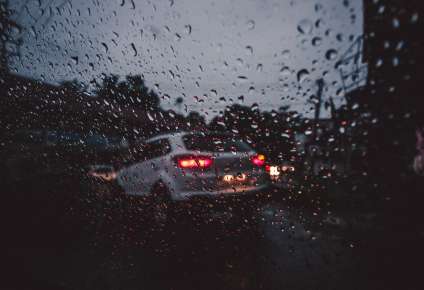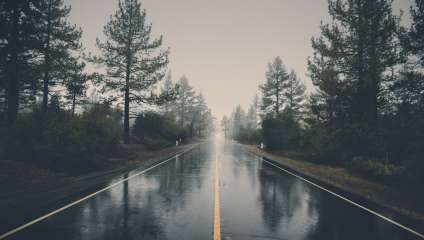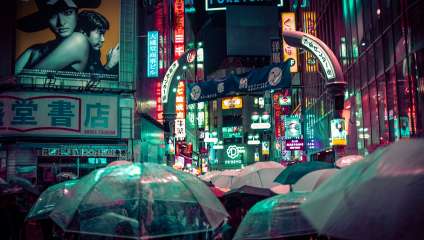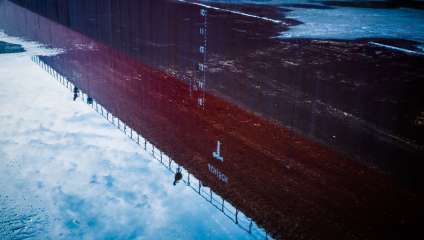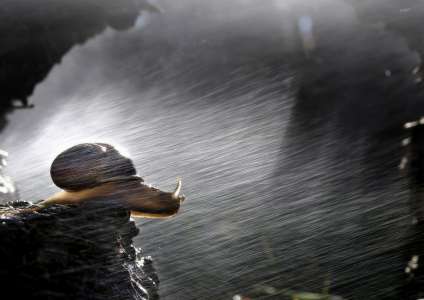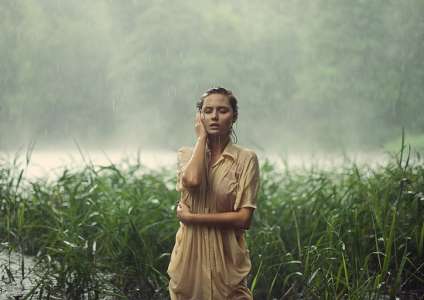How to photograph rain
Published: 06.08.2021
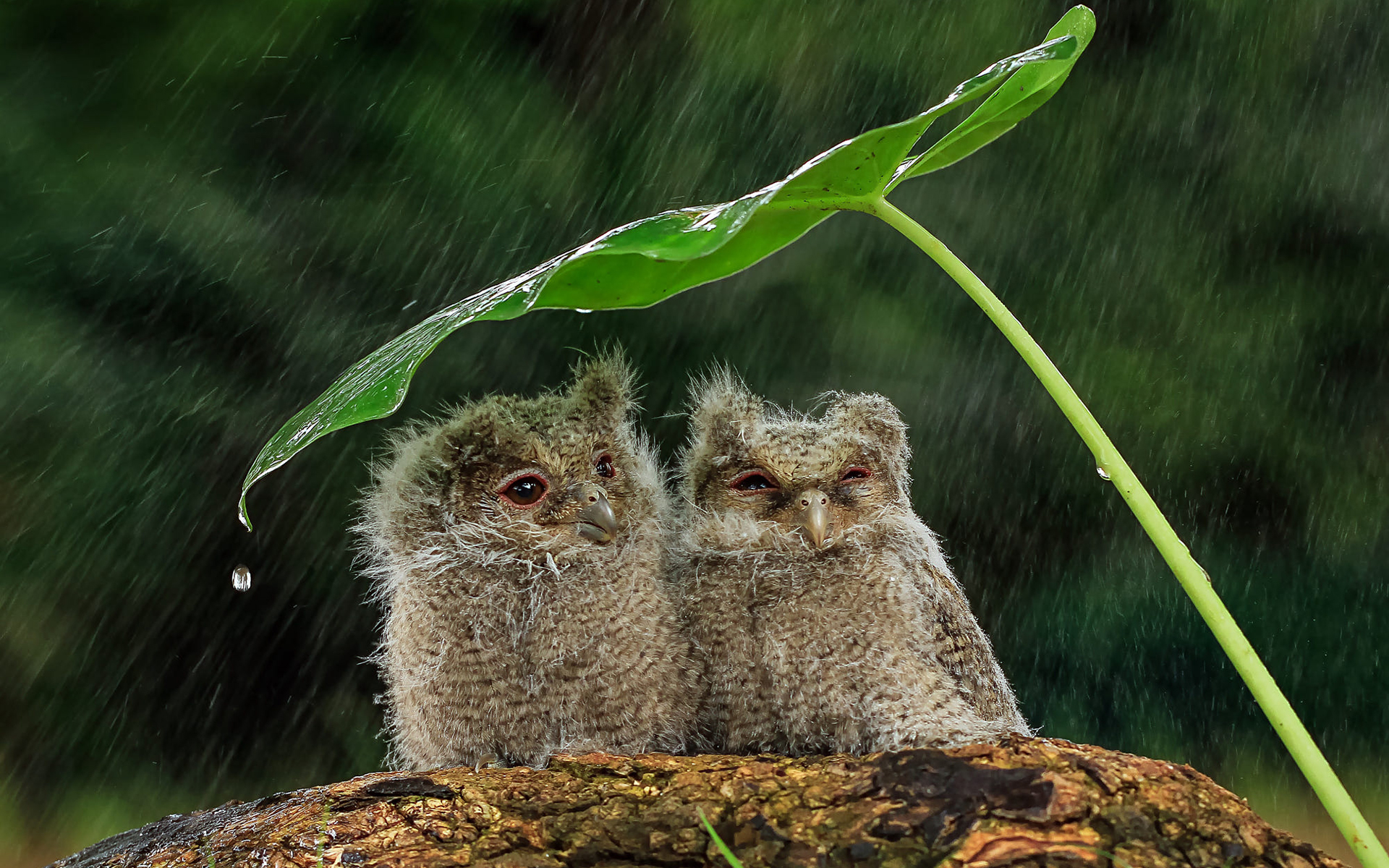
Rainy weather is not a reason to stay at home and refuse a photoshoot. Many photographers do not like shooting in the rain. There is a risk of getting wet and damaging the equipment, the sky is gray, everything is wet, and there is little light. But, despite the disadvantages, bad weather has a lot of advantages. Raindrops create a romantic atmosphere in photos, there is an unusual play of light and water, the sky is painted in amazing tones, and the streets become less crowded. If you prepare properly and know the nuances of shooting in the rain, you can get a lot of unique and interesting shots that will take their place among your best works. Let's consider how to prepare for shooting in the rain, how to set up the camera correctly, and choose the right exposure.
How to prepare for rainy weather and protect your equipment
A wet camera in the rain can ruin photos and even break down. Therefore, before going out for a photo shoot in bad weather, take care to protect your equipment. The most common problem is water getting into the lens and filters. Take dry absorbent wipes with you to wipe the lens, otherwise achieving sharp and clear shots will be difficult. You can protect your camera from the rain in the following ways:
- The most reliable option is to buy a waterproof case. Specialized cases are sold in camera stores and provide reliable protection against moisture. However, there may not always be models available that are suitable for your camera, and the price for them can be quite high.
- The simplest way is to take a polyethylene bag, tape it around the camera body, and make a hole for the lens.
- You can also wrap the lens with a lens hood and shoot from behind a waterproof jacket or raincoat.
- A universal way to protect not only the camera, but also the photographer and models, is to use umbrellas. However, keep in mind that it's not very convenient to take pictures with one hand while holding an umbrella with the other. This method is suitable if you have an assistant who can constantly hold the umbrella over the camera.
- The optimal way is to take photos from under an arch or canopy where raindrops cannot reach. However, this method is only suitable for owners of telephoto lenses capable of shooting at a long distance.
There are no universal rules for taking high-quality photos of rain and droplets. It all depends on the settings, model of your camera and phone, amount of light, and many other factors. Sometimes even the most expensive camera can produce mediocre photos, while a great shot can be captured by chance on a phone camera. Try to take as many photos as possible, experiment with settings, angles, and subjects, and then you will understand what needs improvement in your shooting technique. To avoid making mistakes during a rainy photoshoot, consider the following nuances:
- It is better not to take photos during a heavy downpour, as the camera may not be able to focus properly on objects behind the continuous flow of water. You can take pictures of the rain through a window in the house or car at this time. Blurry water streams look unusual and create a creative effect in photos.
- It is best to take photos in a light drizzle or right after it ends. However, make sure that no drops get on the lens of the camera or filters, otherwise the photos will be blurry.
- If the camera does not recognize raindrops as objects and focuses on other items, use the pre-focusing function. Focus on the drops or streams of water, and then press the shutter button.
- Take photos in manual mode, it is difficult to focus on the specific objects you want when using automatic settings.
- To take clear shots with drops, bubbles, and water streams, use a short exposure of 1/250, 1/500 of a second. The ISO should be 400 or higher. For a rain freezing effect, shoot with a long exposure of over 1 second. A tripod will be needed for shooting a water stream with a long exposure, as it is difficult to get a clear shot when shooting handheld.
- When photographing splashes, use a long focal length and try to move further away from the subject. This way you will get a clear shot and protect your equipment from accidental splashes getting into the lens.
- Raindrops become more noticeable with additional lighting. Take photos near a streetlight or another light source. Try using a flash, but be careful not to overexpose the shot.
- To photograph individual drops, use the macro shooting mode. Find a beautiful reflection or refraction of light in the water, and a beautiful shot is guaranteed for you.
- Modern phone camera models have a long exposure function, try capturing rain in motion. With good lighting, even a mobile camera is capable of taking good shots.
Cool photos deserve unusual framing. Print your cool shots in a polaroid style. Fans of instant photography from the 90s can experience familiar feelings by holding a photo in a Polaroid style. Those unfamiliar with traditional polaroids will appreciate square images with space for captions.
Ideas for photos in the rain
Bad weather brings many interesting ideas and opportunities for shooting. Watch nature and human behavior, photograph everything that seems unusual and attractive to you. In the rain, the streets become deserted and you can capture places that are usually difficult to access due to large crowds of people. The city transforms, interesting reflections appear in puddles and water droplets. And if you're lucky, you can take a photo of lightning or a rainbow that appears after a storm. Try shooting in black and white format, this technique allows you to convey a romantic atmosphere and focus on the necessary details.
In the rain, the sky and the surrounding space usually become gloomy and gray. Look for bright objects to convey contrasts. These can be bright lights, shop windows with streaming water, umbrellas of passersby, or cheerful children splashing in a puddle. Even one bright object can transform a photo and add a special mood and charm to it.
Go out to take pictures in nature during the rain. Pay attention to plants and animals. Birds bathing in puddles, wet cats and dogs, emerging snails and earthworms will make a great addition to your photos. Macro photography enthusiasts will enjoy capturing raindrops on trees and flowers. The reflection of sunlight in water droplets looks especially interesting. If the sun comes out right after the rain, don't miss your chance, catch the sun glares and rainbow reflections.
During the rain, it is difficult to take staged artistic photos of a person. Makeup runs, clothes get wet and stick to the body. It is best to take documentary photos. Ask the model to run through puddles, play with water streams. Capture the dynamics and mood of people in the photos, photograph emotions and facial expressions. Such photos will look more interesting than standard poses and forced smiles.
Even if you don't succeed in having a perfect photo shoot in the rain the first time, don't get upset, experiment, learn to shoot in extreme conditions. Sooner or later, you will get used to using bad weather and you will take amazing photos.




